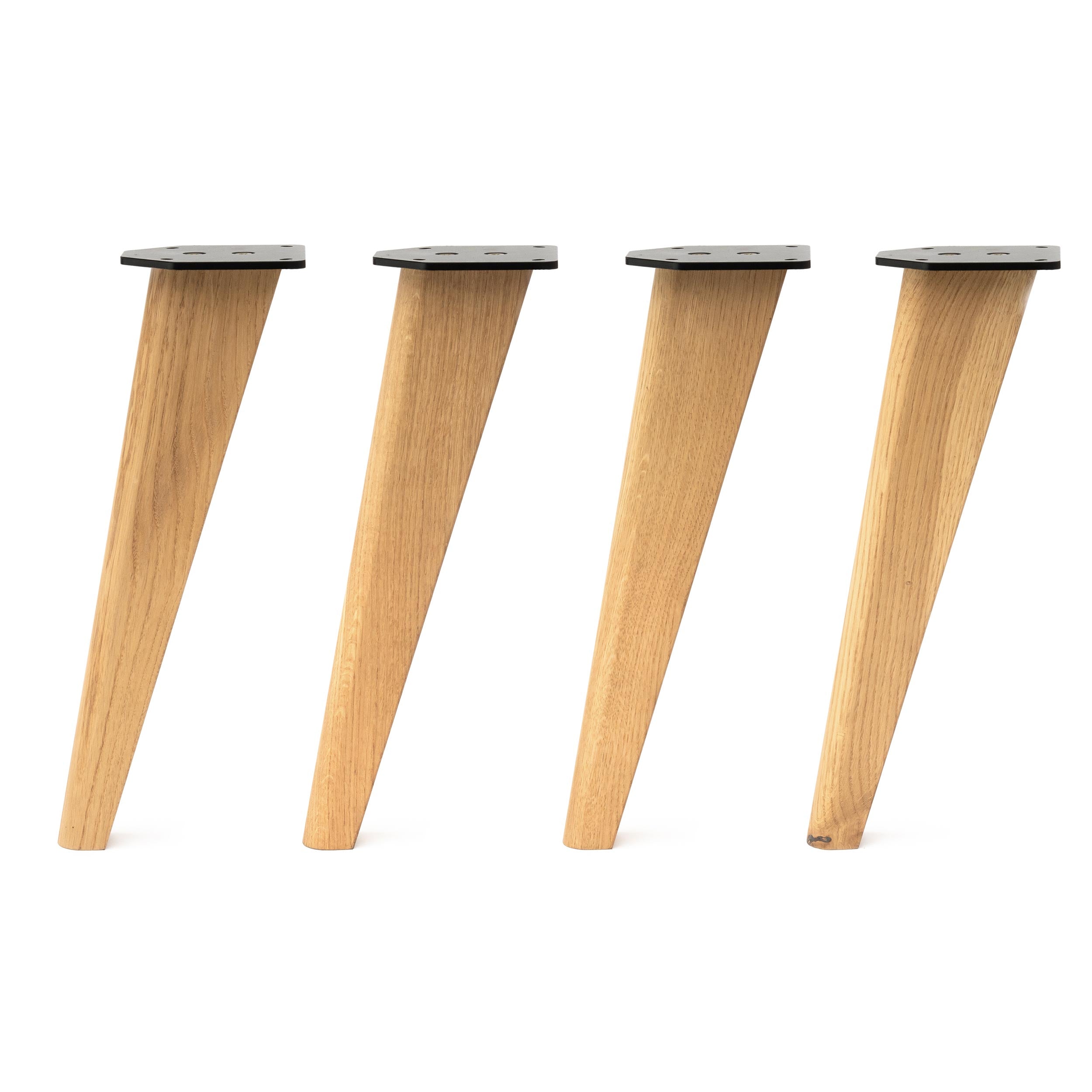What to Think About When Choosing Table Legs Timber for Your Home.
When selecting wood for eating table legs, several vital aspects necessitate cautious consideration to ensure both functionality and visual charm. The kind of timber chosen can significantly affect the table's durability, security, and total style, while the maintenance demands may impact long-lasting use.

Significance of Timber Type
When picking dining table legs, the choice of timber kind plays a vital function in determining both aesthetics and sturdiness. Different timber species supply differing levels of resistance, weight, and stamina to put on, which can significantly affect the capability and longevity of the table. Hardwoods such as oak, maple, and cherry are commonly favored for their robust nature and capability to withstand day-to-day use. These woods not just offer architectural integrity yet also stand up to damages and scratches better than softer options.
On the other hand, softer woods like poplar or ache, while much more economical, may not use the exact same degree of durability and may need more frequent upkeep or replacement. The timber type additionally affects the table's ability to endure environmental factors such as moisture and temperature fluctuations. Furthermore, the selection of timber can affect the ease of completing and tarnishing, which can be critical for accomplishing the preferred appearance.
Visual Factors To Consider
The visual allure of table legs considerably contributes to the total aesthetic of the dining room. Dining Table Legs Wood. When selecting wood for dining table legs, the grain shade, surface, and pattern are crucial components that can boost or detract from the room's design. Different timber types exhibit varying colors and textures; for instance, oak provides a traditional look with prominent grain, while walnut offers a rich, dark style
In addition, the form of the legs plays a vital duty in specifying the table's character. Sleek, minimalist legs can develop a contemporary feel, while extra elaborate, turned legs stimulate typical charm. The design of the legs need to balance with existing furniture and the general theme of the room, whether it be rustic, contemporary, or transitional.
It is also important to consider how the legs engage with other furnishings items, consisting of sideboards and chairs. A cohesive style not only elevates the eating experience however additionally contributes to the home's general visual comprehensibility. Inevitably, the selection of dining table legs must be a thoughtful choice that reflects individual preference while ensuring visual harmony within the room.

Resilience and Stability
Sturdiness and stability are vital factors in the choice of eating table legs, as they directly affect the long life and safety and security of the furniture. When choosing wood for dining table legs, one have to take into consideration the fundamental homes of different timber kinds. Woods, such as oak, cherry, and maple, are typically preferred for their stamina and resistance to wear, making them ideal for high-traffic dining locations.
In enhancement to the kind of timber, the building approach also plays a significant role in the overall security of the table. Legs that are sturdily created, either via conventional joinery strategies or modern engineering approaches, will certainly give improved support and stop tottering. It is important to review the thickness and design of the legs; thicker legs are normally much more steady and can hold up against better weight.
Additionally, the ecological problems in which the table will certainly be utilized can affect toughness. Wood that has been appropriately dealt with for dampness resistance will certainly execute better in moist settings. Inevitably, picking the appropriate combination of sturdy wood and steady building and construction will make certain that your dining table remains a functional and risk-free centerpiece in your home for years to come.
Maintenance Requirements
Choosing table legs made from sturdy timber is just the beginning; comprehending maintenance requirements is just as important to protect their look and functionality. Various wood types need differing levels of care, so best site it is necessary to understand what is required for your particular choice.
Normal cleansing is essential; use a soft, damp cloth to get rid of dirt and debris. Stay clear of severe chemicals that can damage the surface. For timber coatings like varnish or lacquer, routine brightening with furniture wax can boost luster and give a protective layer versus scratches.
Preventative measures are critical (Dining Table Legs Wood). Usage placemats and coasters to avoid straight call with hot or wet products, which can warp or discolor the timber. In addition, think about positioning felt pads under the legs to stop scratches on your flooring and lower use on the wood
Moisture control is another significant variable; maintaining a secure setting helps to stop warping and breaking. Think about using a humidifier or dehumidifier as essential. if your eating area is vulnerable to changes in temperature and moisture.
Budget Plan and Expense Aspects
When preparing to buy eating table legs, recognizing budget plan and cost factors is vital to make an informed choice. The type of wood selected for the legs considerably affects the total cost. Woods, such as oak or walnut, have a tendency to be a lot more costly than softwoods like yearn, as a result of their durability, visual charm, and shortage. Furthermore, consider whether you are acquiring pre-made legs or opting for personalized styles, as modification usually incurs greater costs.
Labor and workmanship likewise play a pivotal role in the total expense. Handmade or artisan-crafted legs may carry a premium cost tag, showing the skill and time bought their production. It's essential to examine the balance in between high quality and cost; spending much more ahead of time can cause a longer-lasting item that needs much less upkeep in time.
Conclusion
In recap, choosing the ideal timber for eating table legs demands mindful consideration of numerous variables, consisting of wood kind, aesthetic charm, budget, maintenance, and sturdiness restraints. The choice of woods such as oak and maple can enhance both strength and visual charm, while softer woods may be much more cost-effective yet much less long-lasting. Inevitably, a well-informed choice relating to material selection will add to the overall performance and durability of the table, making sure an important financial investment for the home.
When choosing wood for eating table legs, several vital elements necessitate cautious consideration to ensure both capability and aesthetic allure.When choosing dining table legs, the option of webpage wood type plays a crucial function in identifying both visual appeals and toughness. When choosing hop over to here wood for dining table legs, the grain shade, pattern, and finish are essential aspects that can improve or take away from the room's style. When picking timber for dining table legs, one have to think about the fundamental residential or commercial properties of various wood types.In recap, selecting the suitable timber for dining table legs necessitates careful consideration of different factors, consisting of wood kind, aesthetic allure, maintenance, sturdiness, and budget plan constraints.
 Jake Lloyd Then & Now!
Jake Lloyd Then & Now! Michael Jordan Then & Now!
Michael Jordan Then & Now! Loni Anderson Then & Now!
Loni Anderson Then & Now! Nicki Minaj Then & Now!
Nicki Minaj Then & Now! Ricky Schroder Then & Now!
Ricky Schroder Then & Now!